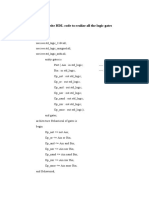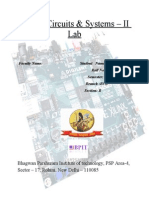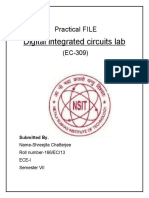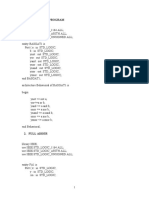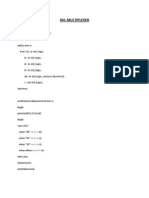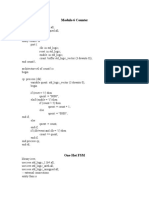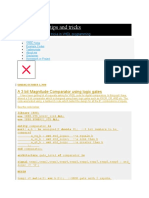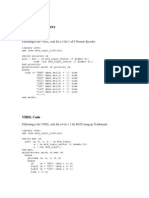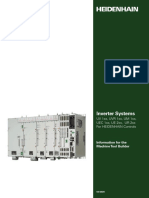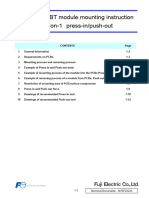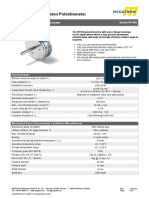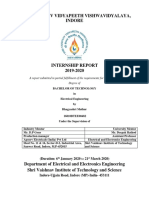0% found this document useful (0 votes)
668 views26 pagesVHDL Combinational Circuits Design
The document describes experiments conducted to design and model various digital logic circuits using VHDL. The experiments include:
1) Designing a 2-4 decoder, 4-2 encoder, and binary to gray code converter.
2) Modeling D flip-flops, registers, and latches with synchronous and asynchronous resets.
3) Designing serial-in parallel-out shift register.
4) Modeling binary, ripple, and BCD counters.
5) Designing an arithmetic logic unit.
Uploaded by
Varun SharmaCopyright
© Attribution Non-Commercial (BY-NC)
We take content rights seriously. If you suspect this is your content, claim it here.
Available Formats
Download as DOC, PDF, TXT or read online on Scribd
0% found this document useful (0 votes)
668 views26 pagesVHDL Combinational Circuits Design
The document describes experiments conducted to design and model various digital logic circuits using VHDL. The experiments include:
1) Designing a 2-4 decoder, 4-2 encoder, and binary to gray code converter.
2) Modeling D flip-flops, registers, and latches with synchronous and asynchronous resets.
3) Designing serial-in parallel-out shift register.
4) Modeling binary, ripple, and BCD counters.
5) Designing an arithmetic logic unit.
Uploaded by
Varun SharmaCopyright
© Attribution Non-Commercial (BY-NC)
We take content rights seriously. If you suspect this is your content, claim it here.
Available Formats
Download as DOC, PDF, TXT or read online on Scribd
/ 26





